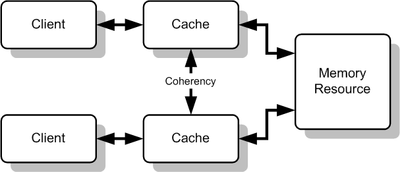User:Stchen
Introduction to Update and Adaptive Coherence Protocols on Real Architectures
In parallel computer architectures, cache coherence refers to the consistency of data that is stored throughout the caches on individual processors or throughout the shared memory. The problem here is that we have multiple caches on multiple processors. When an update to a single cache makes changes to a shared memory, you will need to have all the caches be coherent on the value change. This is better shown below.

According to <ref>Glasco, D.B.; Delagi, B.A.; Flynn, M.J.; , "Update-based cache coherence protocols for scalable shared-memory multiprocessors," System Sciences, 1994. Proceedings of the Twenty-Seventh Hawaii International Conference on , vol.1, no., pp.534-545, 4-7 Jan. 1994 doi: 10.1109/HICSS.1994.323135 Paper</ref> there are two ways to maintain cache consistency. These are invalidation and update. The difference is that invalidation will "... purges the copies of the line from the other caches which results in a single copy of the line, and updating forwards the write value to the other caches, after which all caches are consistent" Since we have already talked about invalidation protocols, we will focus on update protocols. However, now there has been a new type of adaptive coherence protocols and that will also be discussed below.
According to Solihin textbook, page number 229, "One of the drawbacks of an invalidate-based protocol is that it incurs high number of coherence misses." What this means is that when a read has been made to an invalidated block, there will be a cache miss and serving this miss can create a high latency. To solve this, one can use a update coherence protocol, or an adaptive coherence protocol.
Update Coherence Protocol
Intro
Dragon Protocol
Adaptive Coherence Protocol
References
<references />